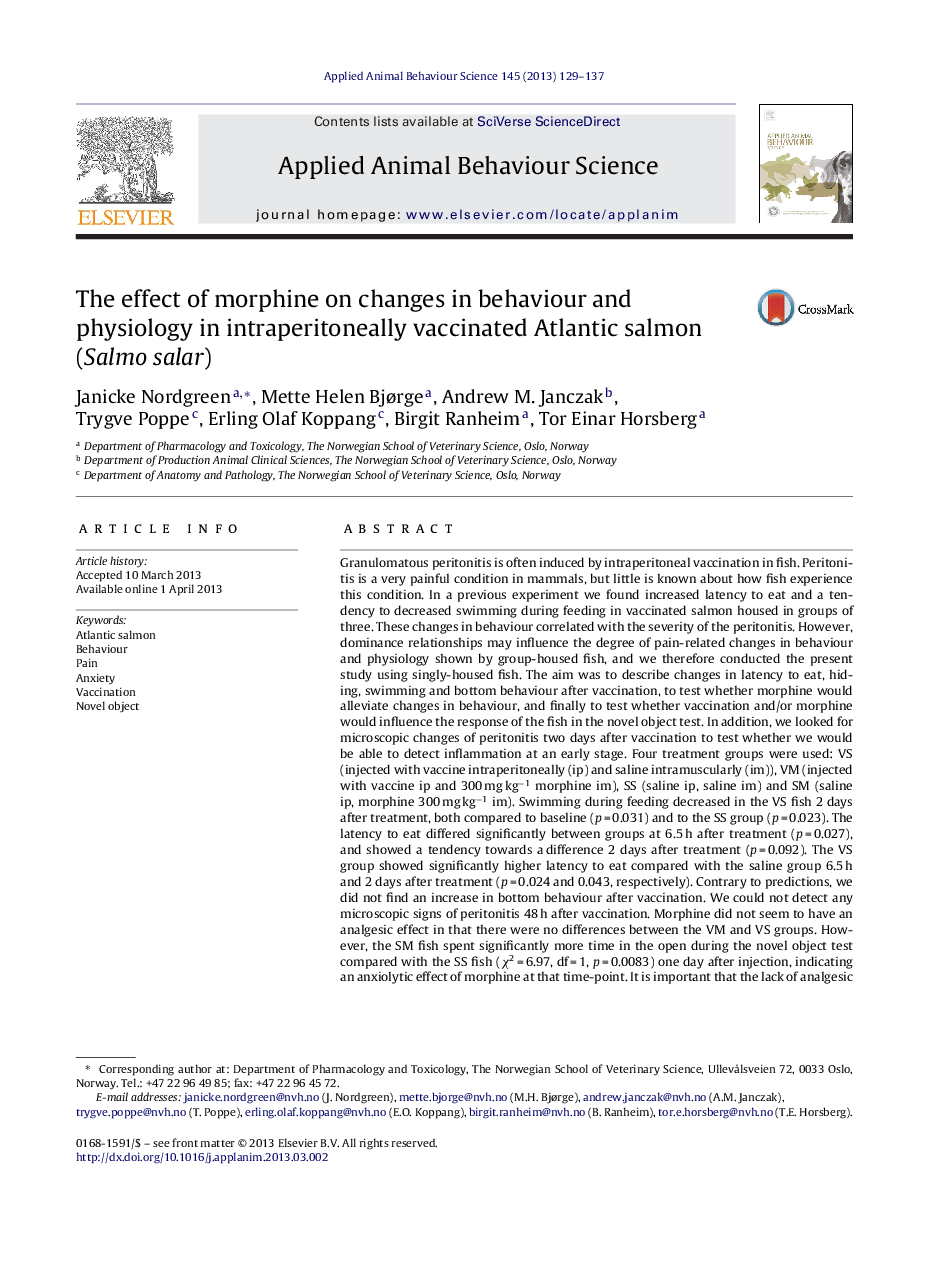| کد مقاله | کد نشریه | سال انتشار | مقاله انگلیسی | نسخه تمام متن |
|---|---|---|---|---|
| 4522721 | 1625363 | 2013 | 9 صفحه PDF | دانلود رایگان |

Granulomatous peritonitis is often induced by intraperitoneal vaccination in fish. Peritonitis is a very painful condition in mammals, but little is known about how fish experience this condition. In a previous experiment we found increased latency to eat and a tendency to decreased swimming during feeding in vaccinated salmon housed in groups of three. These changes in behaviour correlated with the severity of the peritonitis. However, dominance relationships may influence the degree of pain-related changes in behaviour and physiology shown by group-housed fish, and we therefore conducted the present study using singly-housed fish. The aim was to describe changes in latency to eat, hiding, swimming and bottom behaviour after vaccination, to test whether morphine would alleviate changes in behaviour, and finally to test whether vaccination and/or morphine would influence the response of the fish in the novel object test. In addition, we looked for microscopic changes of peritonitis two days after vaccination to test whether we would be able to detect inflammation at an early stage. Four treatment groups were used: VS (injected with vaccine intraperitoneally (ip) and saline intramuscularly (im)), VM (injected with vaccine ip and 300 mg kg−1 morphine im), SS (saline ip, saline im) and SM (saline ip, morphine 300 mg kg−1 im). Swimming during feeding decreased in the VS fish 2 days after treatment, both compared to baseline (p = 0.031) and to the SS group (p = 0.023). The latency to eat differed significantly between groups at 6.5 h after treatment (p = 0.027), and showed a tendency towards a difference 2 days after treatment (p = 0.092). The VS group showed significantly higher latency to eat compared with the saline group 6.5 h and 2 days after treatment (p = 0.024 and 0.043, respectively). Contrary to predictions, we did not find an increase in bottom behaviour after vaccination. We could not detect any microscopic signs of peritonitis 48 h after vaccination. Morphine did not seem to have an analgesic effect in that there were no differences between the VM and VS groups. However, the SM fish spent significantly more time in the open during the novel object test compared with the SS fish (χ2 = 6.97, df = 1, p = 0.0083) one day after injection, indicating an anxiolytic effect of morphine at that time-point. It is important that the lack of analgesic effect is not taken to indicate lack of pain perception in salmon. Inter species differences in analgesic efficacy is well known in veterinary medicine, and the results from this paper indicate that we need to look at alternatives to morphine to find effective analgesics for Atlantic salmon.
Journal: Applied Animal Behaviour Science - Volume 145, Issues 3–4, May 2013, Pages 129–137